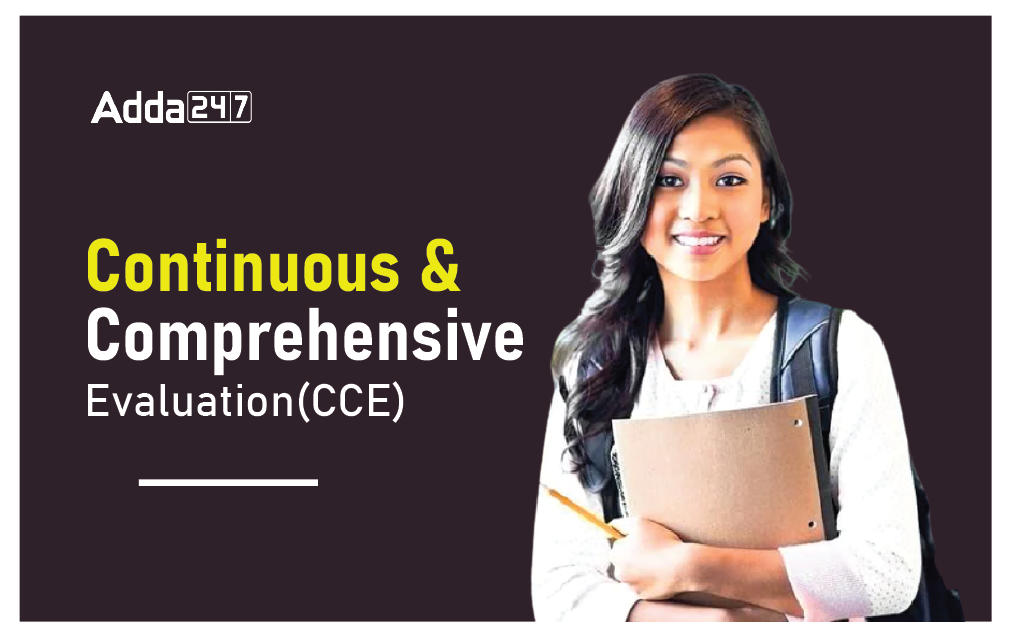Table of Contents
Continuous and Comprehensive Evaluation (CCE) is a process of assessment that has been made compulsory by the Right to Education Act, of India in 2009. CCE contains Scholastic and Co-Scholastic Evaluation. Continuous and comprehensive evaluation refers to a student assessment system that covers all facets of education. Here we are going to learn more about Continuous and comprehensive evaluation definitions, types, And scholastic and Co-Scholastic Evaluation from the CTET exam perspective.
Continuous and Comprehensive Evaluation
Continuous and Comprehensive Evaluation (CCE) refers to a school-based evaluation, which covers all aspects of school activities related to a child’s development. It emphasizes twofold objectives such as continuity of evaluation and assessment of learning outcomes in a comprehensive manner. It covers all the domains of learning i.e. cognitive, affective and psychomotor domains. It treats evaluation as a developmental process. Evaluation in the cognitive domain is associated with the evaluation of cognitive abilities such as knowledge, understanding, application, etc. Evaluation in the affective domain means evaluation of attributes such as attitudes, motives, interests, and other personality traits. Evaluation in the psychomotor domain involves assessing learners’ skills to use their hands (e.g. in handwriting, construction and projects).
CDP Study Notes for all Teaching Exams
- Meaning of Continuous- The term ‘continuous’ refers to regularity in assessment.
- Meaning of Comprehensive – The second term associated with CCE is ‘comprehensive’. The term ‘comprehensive’ implies that evaluation of learners’ performance is carried out in both scholastic and co-scholastic areas.

Definition of CCE
- The National Policy on Education (NPE 1986), states that Comprehensive and Continuous Evaluation should incorporate both scholastic and non-scholastic aspects of evaluation, spread over the total span of instructional time.
- “A system of education and examination that teaches members of disadvantaged groups the requisite problem-solving and analytical skills needed by the job market is vital. Memorizing and regurgitating textbooks is not a skill needed by the job market. An exam system that encourages this type of ‘learning’ snuffs out creativity. To teach skills and create excellence is the way – perhaps the only sustainable way – toward real equity.” Examination Reform, NCF 2005 – NCERT.
- The NCF 2005 also recommends that a school-based continuous and comprehensive evaluation system be established in order to-
- reduce stress on the children
- make evaluation comprehensive and regular
- Provide space for the teacher for creative teaching
- Provide a tool for diagnosis and for producing learners with greater skills.
Nature of Continuous and Comprehensive Evaluation
The nature of CCE is so comprehensive that it includes almost all aspects of child development. It integrates assessment with the teaching and learning process; emphasizing the assessment of learner abilities in scholastic areas along with the co-scholastic areas.
- CCE encourages and motivates students to be positive in their attitudes.
- It emphasizes that a teacher’s judgment should be made through an honest and objective appraisal without bias.
- It also encourages continuous interaction with parents about their children’s progress and performance.
- CCE is developmental because the emphasis is given to the improvement of students’ learning throughout the schooling process.
- It is a process of continuous attempts to assess whether desirable changes are taking place in students along the lines of educational objectives.
Scholastic
Scholastic areas include all those academic activities which are associated with various subjects. The term ‘Scholastic’ refers to those activities, which are related to intellect or the brain. It is related to the assessment of learners in curricular subjects. It includes assignments, projects, practicals, etc. The desirable behaviour related to the learner’s knowledge, understanding, application, evaluation, analysis, and creation in subjects and the ability to apply it in an unfamiliar situation are some of the objectives in the scholastic domain.

Tools for assessing student performance in scholastic area

Co-Scholastic
This includes assessment in co-scholastic areas such as Life Skills, Attitudes and Values, Sports and Games as well as other Co-Curricular activities. The CCE is an effort to address all these aspects holistically. The desirable behaviour related to the learner’s Life Skills, attitudes, interests, values, co-curricular activities and physical health are described as skills to be acquired in a co-scholastic domain.

Tools for assessing co-scholastic aspects

Formative Assessment (FA)
Formative Assessment will be used to assess the teaching-learning of the syllabus. In order to help the students and improve their performance levels, the schools shall diagnose their learning difficulties through Formative tests right from the beginning of the academic year and bring it to the notice of parents at appropriate intervals of time. They will recommend suitable remedial steps to enhance their learning capability. Similarly, gifted children should be provided with further reinforcements by giving them additional assignments, enrichment material and mentoring. The formative assessment should normally be made on recorded evidence based on anecdotal records to be maintained by the class teacher or the subject teacher.
Summative Assessment (SA)
The evaluation conducted at the end of an instructional segment is called summative evaluation. It is designed to determine the extent to which the instructional objectives have been achieved. It is usually used for assigning course grades or certification.
Download Study Notes on Continuous and Comprehensive Evaluation(CCE) PDF




 समुद्र का पर्य�...
समुद्र का पर्य�...
 उपमा अलंकार: पर�...
उपमा अलंकार: पर�...
 समास परिभाषा, भ�...
समास परिभाषा, भ�...














